For nearly 60 years, the artist Ernest Pignon-Ernest from Nice, 83, has been transforming streets around the world into ephemeral and committed works of art, thus exalting memory, poetry and revolts. It is from La Ruche, in Paris, his place of life and work, that the pioneer of urban art looks back on his unique career.
Where are you now?
I am speaking to you from my studio which is located in the city of artists of La Ruche, in the 15th arrondissement of Paris, a place created in 1895 by the sculptor Alfred Boucher. A few weeks ago, I was in Cuba to participate in the Havana Art Biennial with a retrospective exhibition of my work. I made a monumental collage in the streets of the city, “Baroque Concert”, which evokes the novel by the Cuban writer Alejo Carpentier. Vivaldi, Handel, the Cuban composer Joseíto Fernandez or even the Aztec emperor Montezuma thus meet on a wall overlooking one of the oldest squares in the capital. In recent years, I have participated in numerous exhibitions, in particular at the Espace Louis Vuitton in Venice, as well as at the Palais des Papes in Avignon. It's fabulous, but it disperses me, I need to meet up here, in La Ruche, to work on my future projects.
What prompted you to intervene on the streets?
Coming from a modest background in Nice, I left school at 15. My passion for drawing and Picasso then guided me to the world of art, and I quickly put my skills to good use by working for an architect. In 1964, I rented a villa in Mont Boron, a chic neighborhood in Nice, with my partner Yvette Ollier and my friend the poet Daniel Biga, as well as his wife. It quickly became a place for meetings and creation, where we developed the magazine Identités and the first tote bags by artist Ben Vautier. In 1965, I made the decision to devote myself fully to painting and I settled in Vaucluse in a large workshop that allowed me to work on large formats. In 1966, alerted by René Char's campaign against the nuclear base project on the Albion plateau, I decided to paint on this theme, revealing the underlying violence of this contradiction between the beauty of the landscapes and the threat of death. The painting could not contain all my ideas. I wanted to show what was not visible, and I made stencils from a photograph of a charred man in Hiroshima, which I stuck on the walls, rocks, and roads that led to the Albion Plateau. From this action, I considered the places as my palette. Street art artist Banksy even recognized that I had been a pioneer in this field, saying: “Ernest Pignon-Ernest did that thirty years before me!”

Tell us about your artistic approach.
In my work, I try to understand realities: everything that is visible (space, color, light...), and I take into account history, buried memory and their symbolic potential. I then add an element of fiction, my life-size black and white drawing, whose appearance exacerbates the reality of these places, whose history had become trivialized over time. Unlike the stencils I used on the Albion set, which I found to be too binary and poor graphically, I decided in 1971 to use screen printing in order to create a stronger presence in the image. Since this period, I have made a first drawing in charcoal and black stone, then work with notched erasers of various thicknesses to shape the shadows. Then, I print it on very thin paper, recovered from the scraps of newspaper presses. I leave the white rectangle of the drawing visible to support its fictional function. The fragility of paper is voluntary: the announced death of my works is part of my proposal, because they can be easily damaged, torn off, and soiled. It also questions our relationship to time. My work as a painter is a plastic intervention that seeks to evoke poetic, political or anthropological resonances.
In 1971, for the centenary of the Paris Commune, you made a series of drawings...
I had identified the places linked to this bloody week, and to other tragic battles for freedom that had taken place in Paris, such as Père-Lachaise, the Butte aux Cailles, the banks of the Seine, the Sacré-Coeur steps, or those of the Charonne metro — by a voluntary anachronism — and had pasted thousands of silkscreens of recumbents, representing the corpse of a Communard. The idea was to resurrect individuals who had hitherto been condemned to anonymity. I was arrested twice during their pose. But, as my collages do not vandalize the street, because it is only paper that I stick, there were no prosecutions... I was arrested at least fifty times in France during my career! I allow myself to intervene in the city, but I am aware that it is a place that we share together. Besides, when I make a provocative collage, I like the idea that people can tear it apart, that my works live! I paste my images at night, which gives me time to compose my installation like a painting. They will only be legible the next day, after they have dried. Passers-by then discover this invisible appearance the day before.
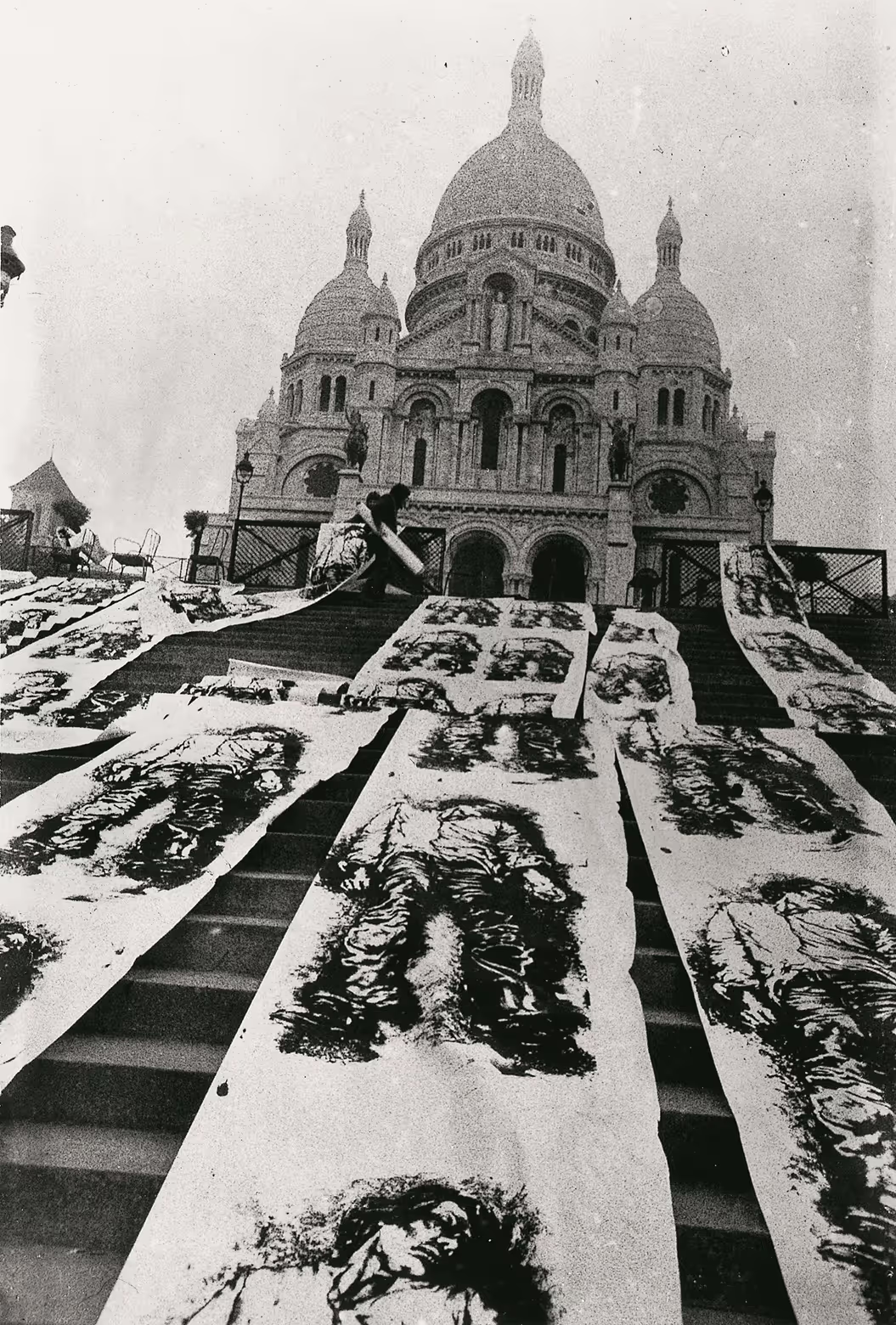
Was it during this period that you decided to move to Paris?
I met the painter Henri Cueco who alerted me to the possible disappearance of the city of artists of La Ruche. I was then offered to rent a workshop there and to live there. But I had just obtained the keys to an apartment in Villefranche-sur-Mer, near Nice, where I wanted to go back to live. I hesitated a lot, but I finally opted for La Ruche! I still live there because it is an extremely inspiring place. My neighbor is a Greek artist, I have two others who are Iranian and Korean, and my best friend is Kurdish. This city welcomed Fernand Léger, Blaise Cendrars and Marc Chagall, who lived there during two major artistic periods during which Guillaume Apollinaire suggested the titles of paintings to him. I also met Arroyo, Chambas and Alberola there. Since then, I have bought an apartment in Nice, in the Réserve district, very close to the port. I go there every quarter to recharge my batteries. On the shelves of my Parisian workshop, I placed postcards of the city and I obviously subscribed to the famous Nice magazine Lou Sourgentin, created in 1970, whose director is a childhood friend!
You intervened in the streets of Nice in 1974 when the municipality, then managed by Jacques Médecin, decided to combine Nice with Cape Town in South Africa...
When I learned this, while Nice has a cosmopolitan history - we are all here descended from Italians or immigrants - I found it revolting! The fact of wanting to combine Nice with Cape Town, capital at the time of institutionalized racism, when, three months earlier, the United Nations had declared Apartheid a crime against humanity, made me want to act! To denounce this pairing, I pasted dozens of drawings of a black family behind barbed wire around the city. Arriving from Paris with my screenprints, I met up with fifteen friends on Place Saint-François to prepare the glue. We then covered with my drawings the walls of the Promenade des Anglais, Place Masséna, the fences of a company that worked with South Africa, up to the rugby stadium. Mayor Jacques Médecin had suggested that he was going to file a complaint, but I never had reprisals. On the other hand, following this action, the United Nations Special Committee against Apartheid invited me to create a poster for the release of Nelson Mandela and to define an anti-apartheid project in the visual arts community. So I went to New York with Jacques Derrida and Antonio Saura to present “Against Apartheid”, an exhibition bringing together a hundred works by international artists, such as Rauschenberg, Tàpies, Soulages, Lichtenstein and Arman. She then travelled to 48 countries! In accordance with our statutes, the works were handed over to the first South African democratic government in 1996. On this occasion, I had the honor of meeting Nelson Mandela and Desmond Tutu. I then continued to use this technique of large formats printed on rotary paper to denounce immigration, abortion, expulsions and workplace accidents, in France and abroad. In 1979, Suzanne Pagé, director of the Museum of Modern Art of the City of Paris, recognized the uniqueness of my work and offered me an exhibition. A great first for me who had only done collages in the street! It allowed me to analyze my work and the world of art discovered my thinking on urbanity and its history. This exhibition launched my career.
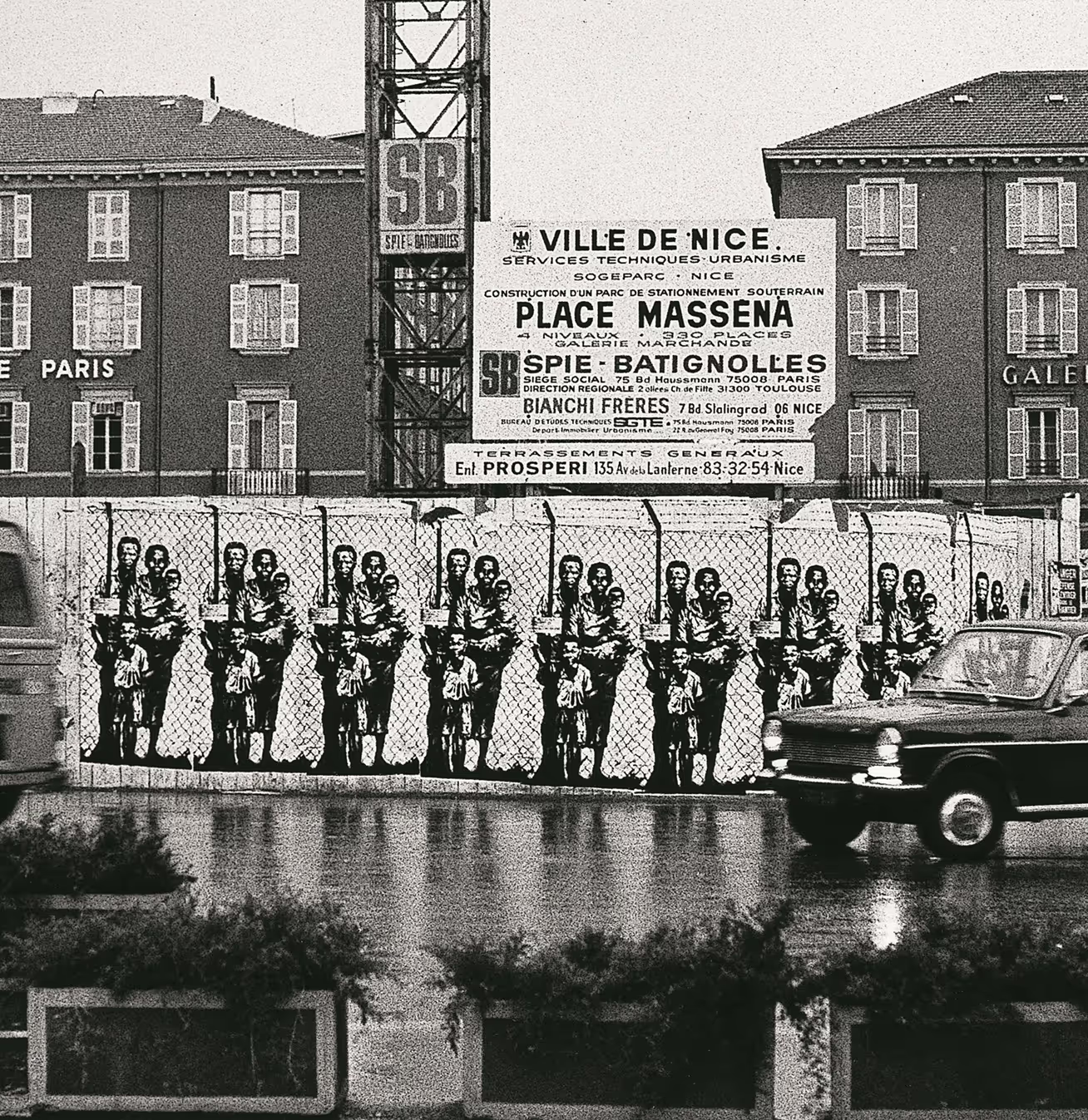
The portrait of Arthur Rimbaud that you made in 1978 has become an iconic work, and you even consider it your “hit”.
In ten years of writing, Arthur Rimbaud revolutionized the language of modern poetry. When you have read Rimbaud, you cannot imagine it frozen, like a marble statue on a base or in a frame. You have to imagine it in motion. So I designed a route of 400 drawings screen-printed on newsprint, from Charleville, his birthplace, to Paris. It shows the 17-year-old poet, inspired by a photograph taken by Étienne Carjat. The overall look is inspired by Verlaine's sketches. This ephemeral reincarnation of Rimbaud, a walker and vulnerable, is perhaps what is most Rimbaldian about this intervention. It was also the starting point for a long series of tributes paid to poets, from Baudelaire to Nerval, via Mayakovsky, Genet, Neruda, Mahmoud Darwish, or Pier Paolo Pasolini.

Between 1988 and 1995, in Naples, you created a journey linking death to life, the founding myths, pagan and Christian, to popular customs, by questioning Neapolitan painting and in particular the work of Caravaggio.
I decided to go to Naples on a whim, listening to a radio program by Philippe Hersant playing Neapolitan music. It made me want to discover this complex, historic and popular city that is the basis of my Latin, Mediterranean and Christian culture, and to begin my quest for the sacred, my religious quest that I had not yet begun. I have documented myself for a long time. From Virgil to Erri de Luca, via Alexandre Dumas and the Bible, I have read nearly a hundred books about Naples and I have been there twenty times, maybe even thirty! There, nothing disappears; under our feet, the layers of history are superimposed. However, death is prowling, omnipresent due to plague epidemics, such as that of 1656, earthquakes and the constant threat of Vesuvius, which is still active. Paradoxically, this awareness of the fragility of existence exacerbates the joy of life of Neapolitans, who savor every moment. In 1987, during my first stay in Naples, I spent a year exploring the city, day and night, soaking up its history, its smells, its people. It was during the two nights of Thursday and Good Friday in the year 1988 that I intervened so that the Neapolitans could discover my drawings on Easter Day, like a resurrection. I had pasted dozens of images on the theme of death and its representation, as if they were exhuming themselves from the past and regaining the place that should be theirs. There were recumbent figures inspired by Giordano or Ribera, a man carrying a body... On the ochre wall of the Sansevero Chapel, I even drew a quote from David and Goliath by Caravaggio, where David held the heads of Caravaggio and Pasolini. When I discovered my images, no one knew who made them, because I never sign my works. It creates poetry and mystery. It was amazing because people were both confused and excited about my references about their own lives. In total, between 1988 and 1995, I pasted 300 original silkscreens and drawings in this city. Some drawings remained in place for 15 years, people maintained them, glued them back together, and none was deliberately damaged.
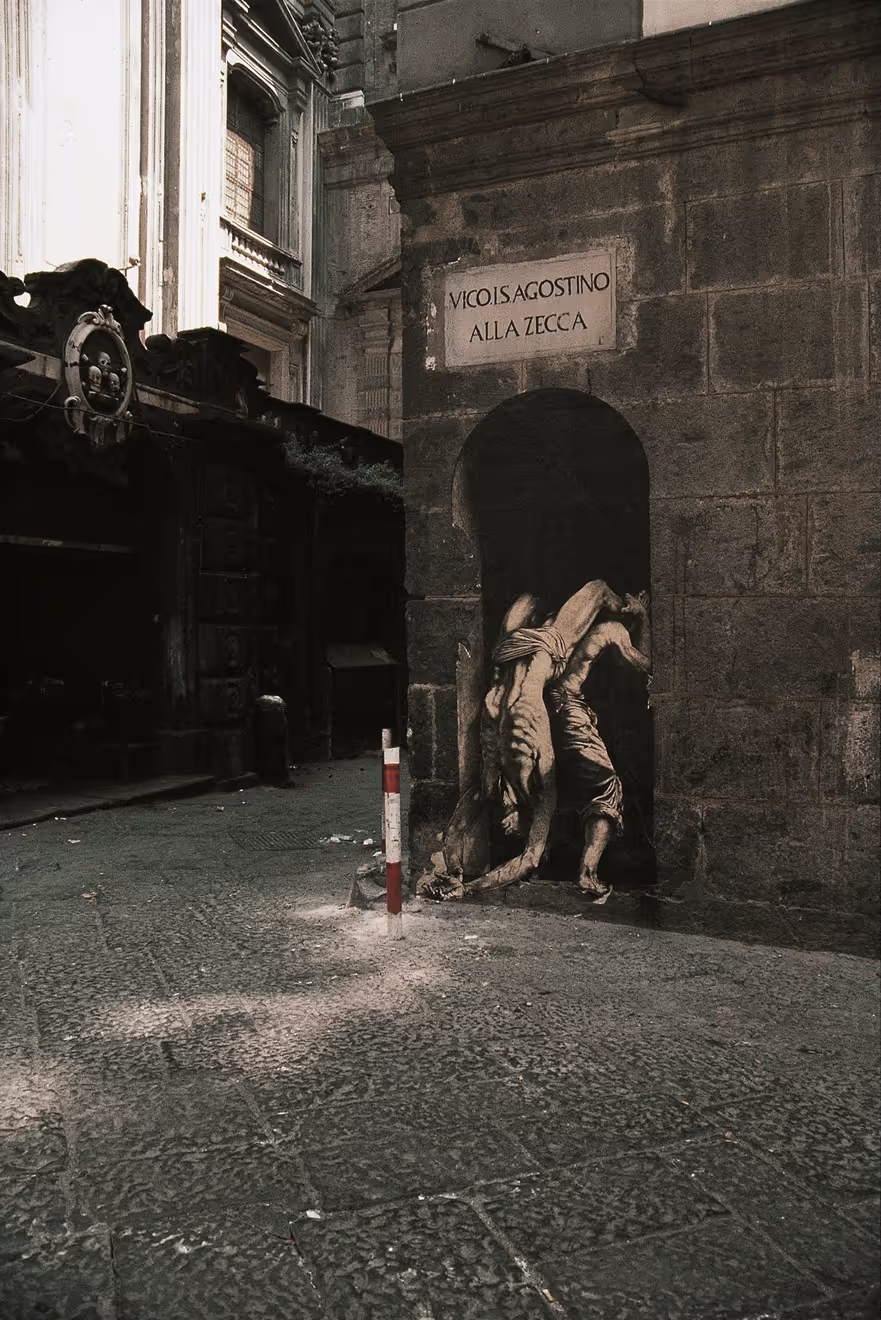
-TAILLE.avif)
What is your news?
In 2015, I paid tribute to the poet and filmmaker Pier Paolo Pasolini in Rome, Naples, Matera and on the beach in Ostia where he was murdered. Forty years after the tragedy, I represented him carrying his dead body in his arms, like Michelangelo's Pietà. This year, on the occasion of the 50th anniversary of his assassination, I am thinking of working again on Pasolini, which remains one of my greatest artistic references. The writer René de Ceccatty, who wrote his biography, is organizing a big tribute to him, so I think I will do an exhibition. If I rest? Yes, when I draw!

To discover all of Ernest Pignon-Ernest's work, visit the artist's official website.



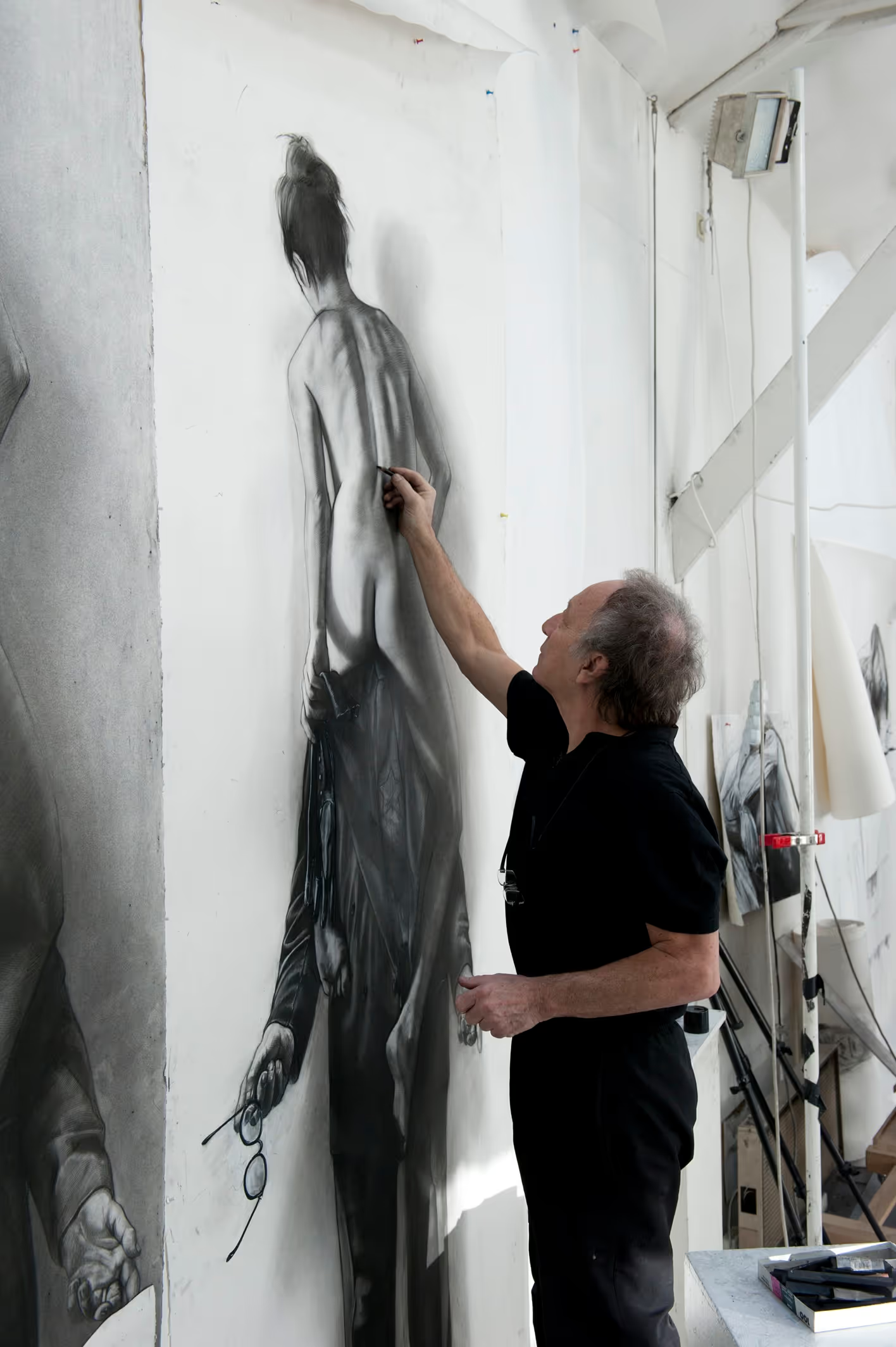


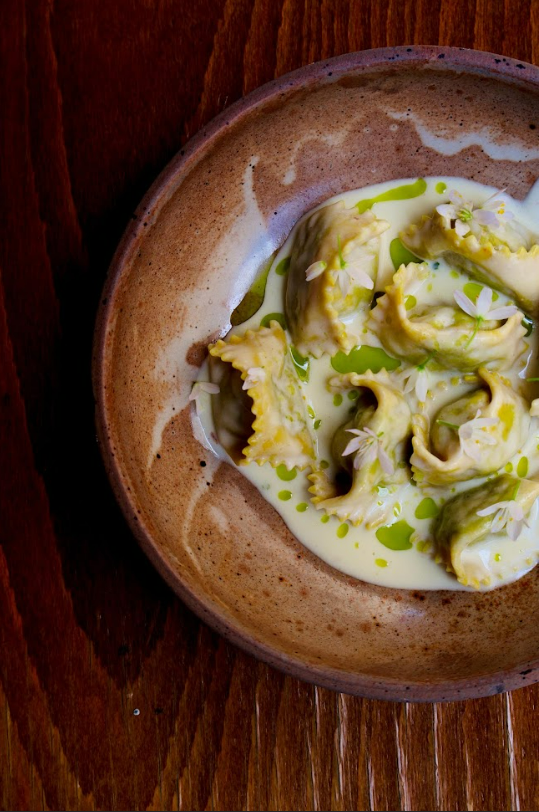
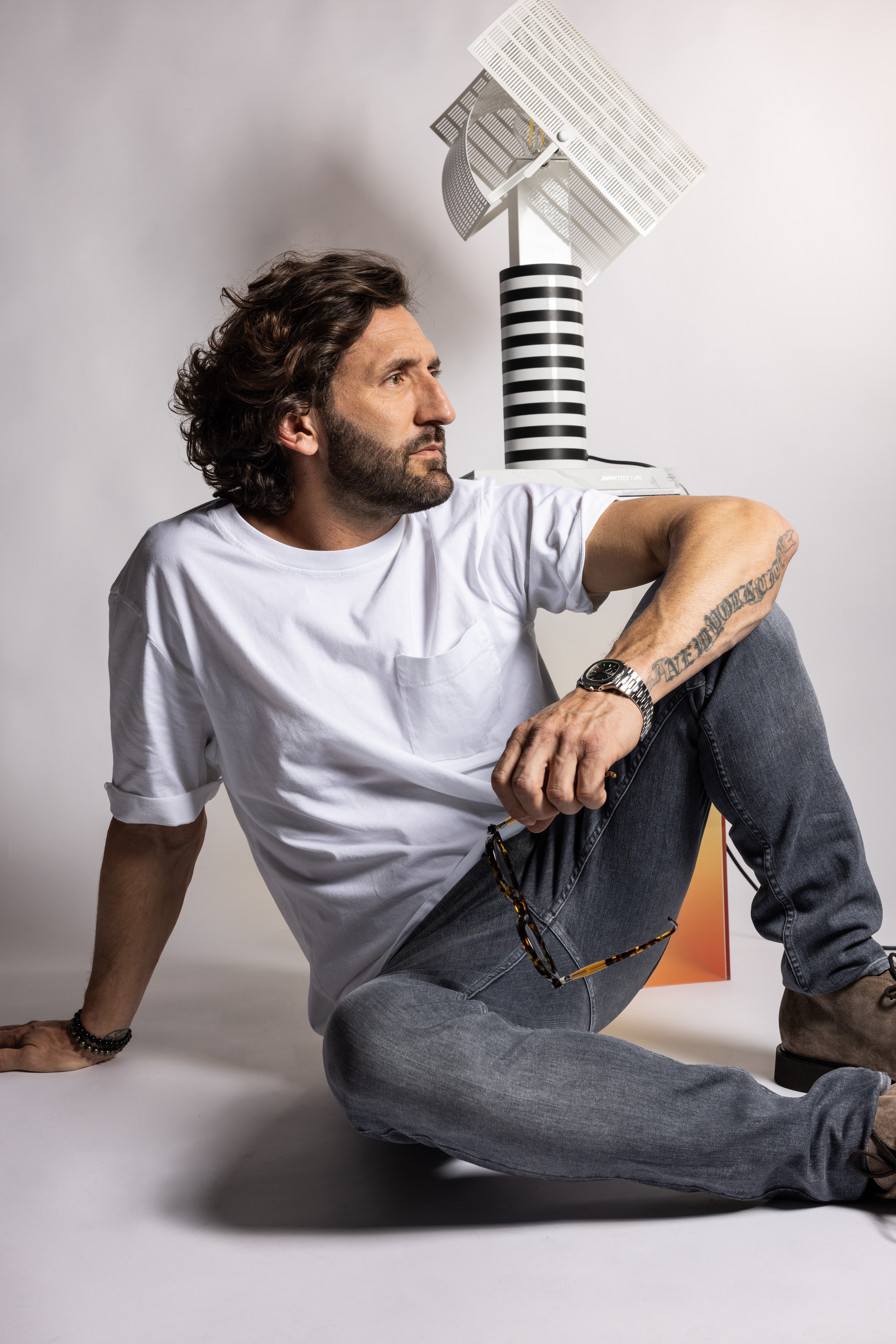

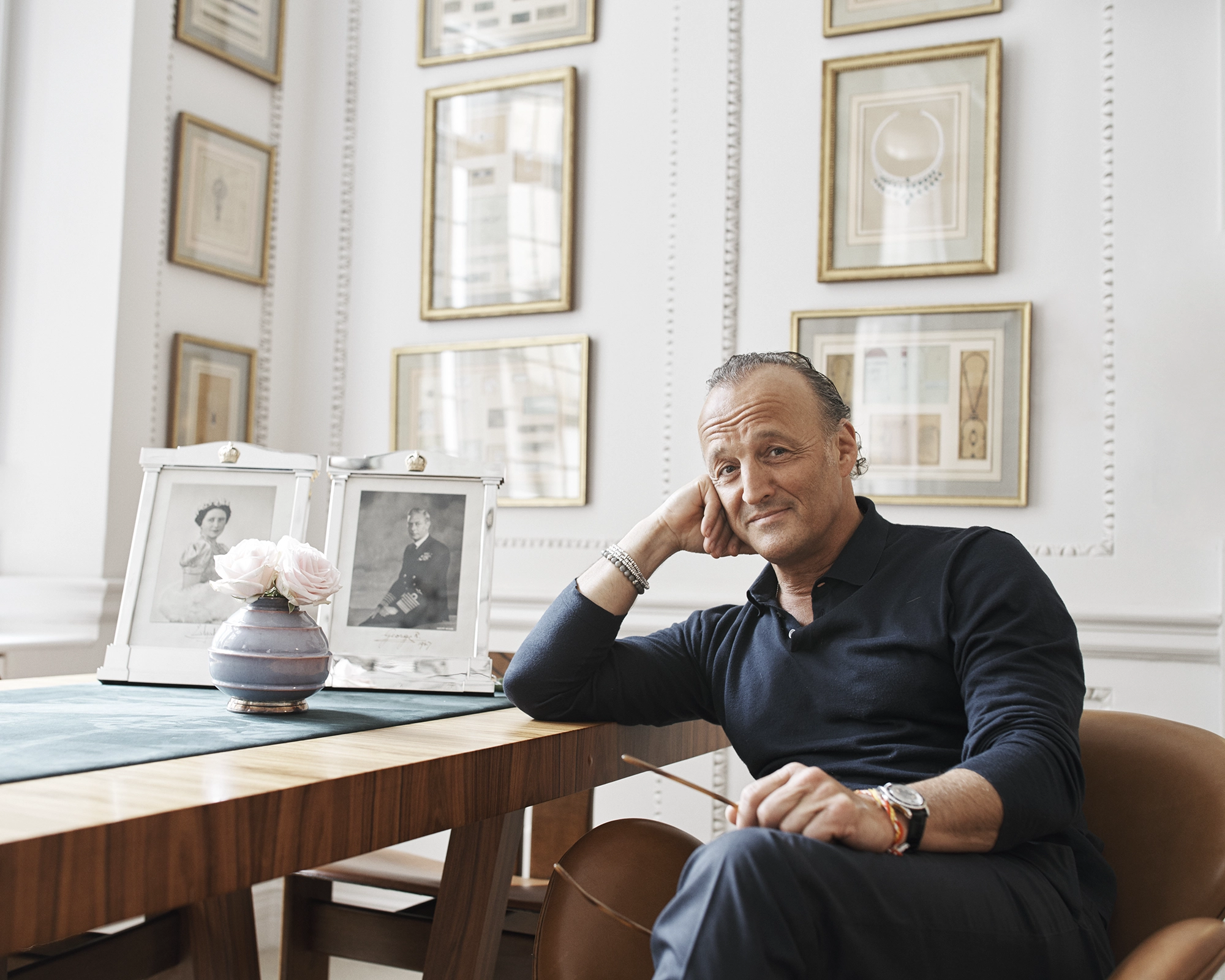
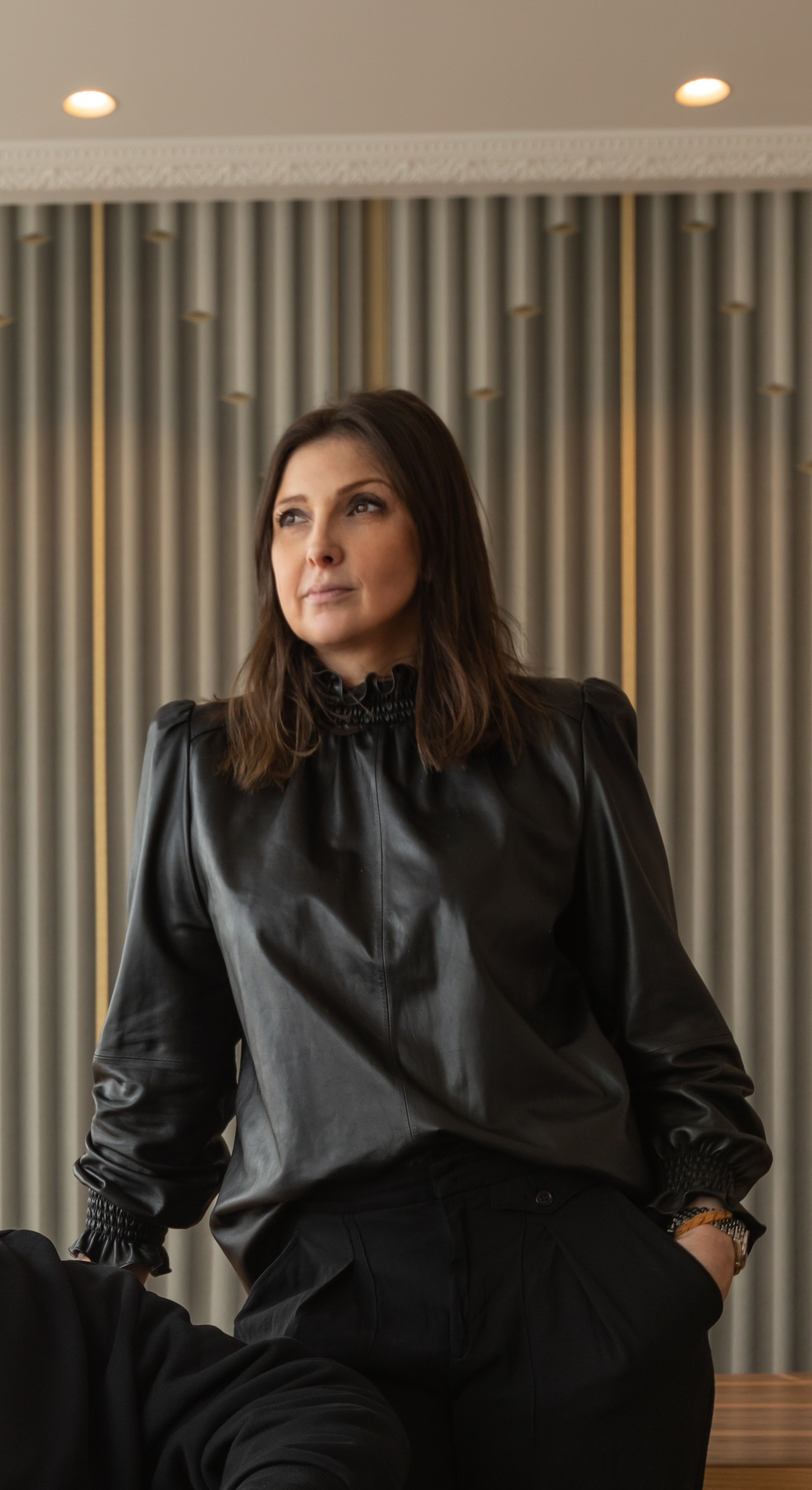
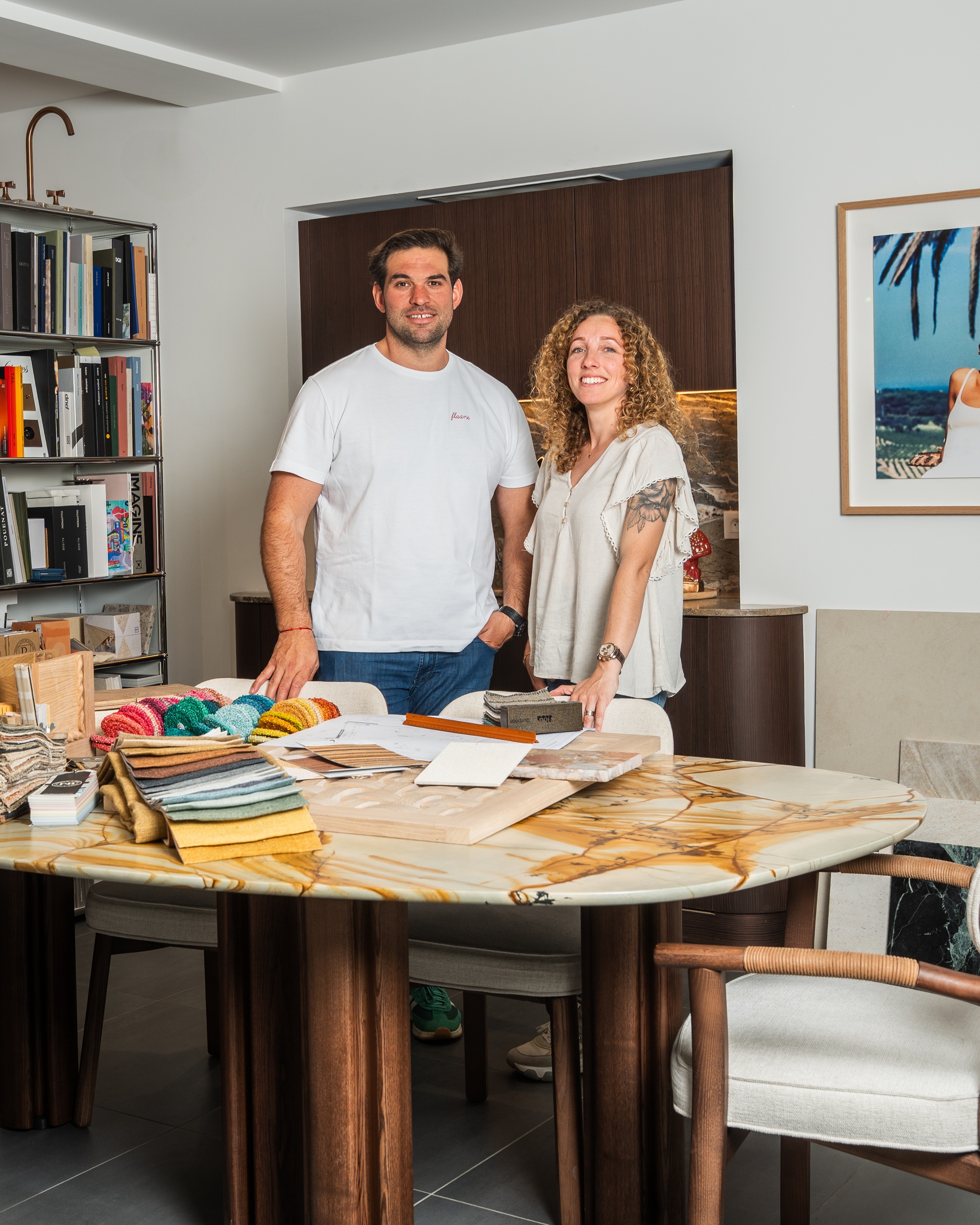
2%20pint.jpg)
%20V%204C%20%20%C2%A9Oph%C3%A9lie%20Collignon%20(5).webp)
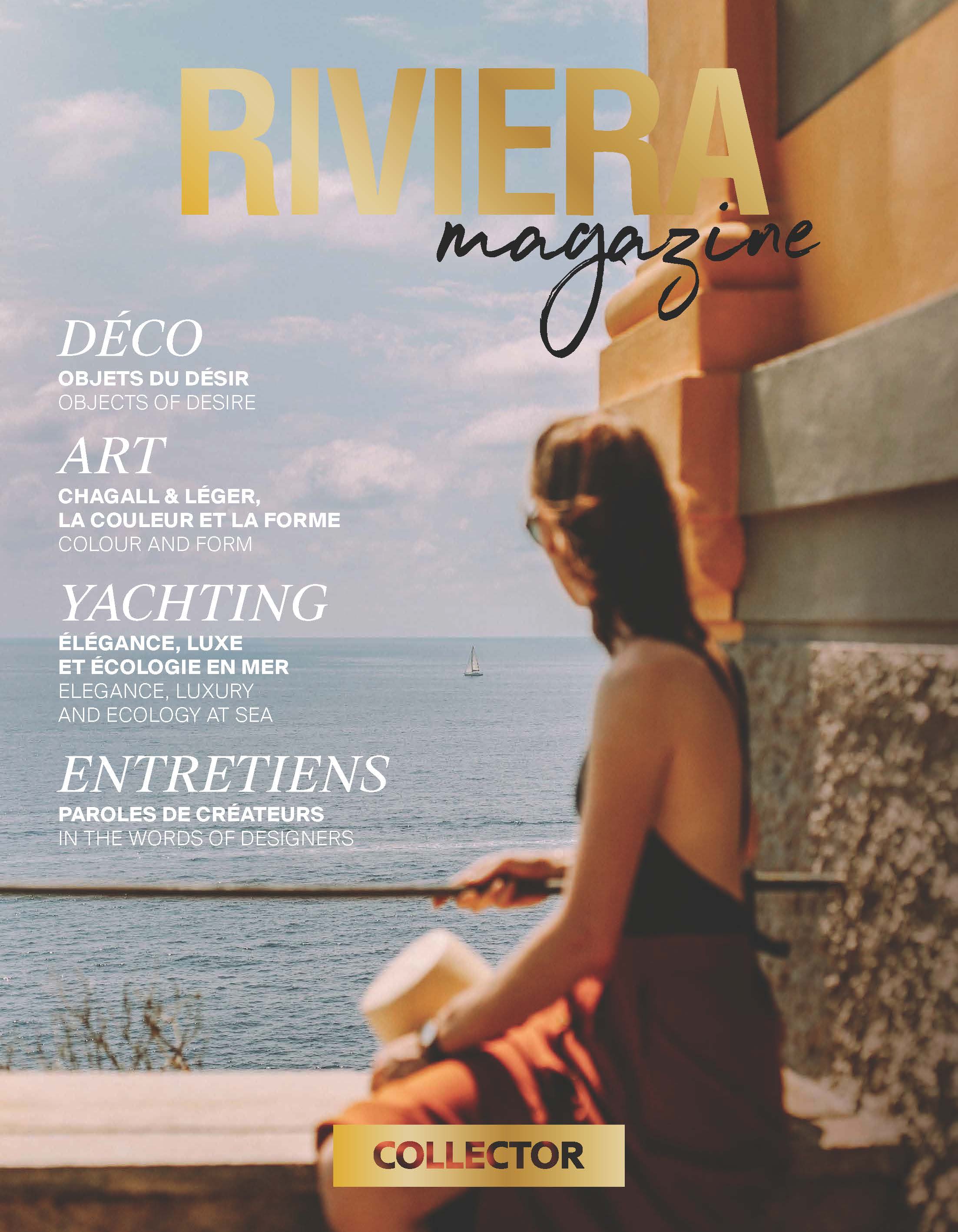

.avif)


.avif)